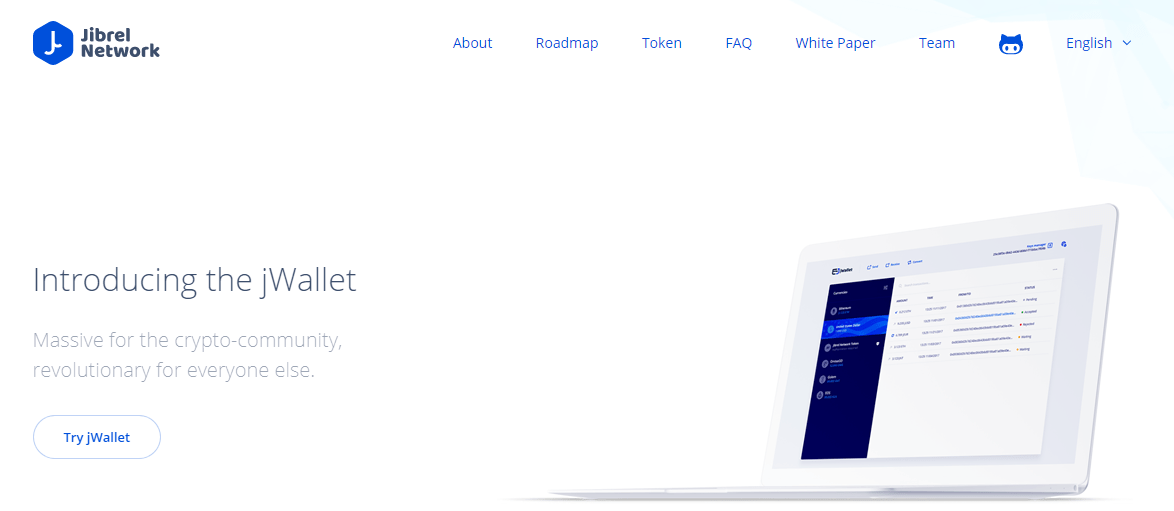Ever since the launch of Bitcoin back in 2009, blockchain technology has started to transform various aspects of our everyday lives. Through the use of this technology, we are able to streamline transactions in a completely decentralized way, thereby allowing for maximum transparency. However, the use of crypto is still heavily restricted by issues related to usability and geography. Additionally, there also exist various systemic risks due to bottlenecks that make it hard to convert traditional assets to digital assets (and vice versa).
The Jibrel network consists of a decentralized platform that has been designed to help with the easy tokenization of digital assets. These tokens will serve as equities, currencies, commodities, etc. that will be fully usable within the Ethereum blockchain. They will be referred to as Crypto Depository Receipts (CryDR) and will make use of smart contracts for all transaction purposes.
Since digital financial assets can be cumbersome to trade, users often have to make use of various services to exchange these commodities in an easy manner. However, through the conversion of these assets into a single tokenized entity, Jibrel allows different currencies and assets to be traded via a single platform.
Overview of Jibrel
- Makes use of ERC20-compliant tokens
- Allows global transactions to occur within a matter of seconds
- Supports a wide array of fiat currencies including USD, GBP, EUR, RUB, and AED.
- Solid backing — has support from established names within the blockchain sector such as Don Tapscott, Saul Hudson, and Mohammed Al Sehli.
Key Features
The Jibrel Network is designed to help turn digital assets such as currencies and equities into ERC20-compliant tokens.
Users will be able to use the native CryDR token for various purposes such as:
- Sending and receiving payments across the globe with the single click of a button
- Trading various assets without having to switch between different platforms
- Creating hedge funds

Tiered architecture model used by Jibrel (courtesy of the company whitepaper)
In addition, native Jibrel tokens can also be employed for use with decentralized financial instruments such as bonds and securities.
From a functional standpoint, Jibrel has the potential to solve some of the major problems that are currently being faced by financial trading companies built on the blockchain. Some of the core issues that Jibrel addresses are those of high transaction fees as well as slow transfer times.
Additionally, we can see that this platform is designed to make asset storage as well as local currency conversions easier. In a nutshell, users can simply transfer their digital assets to the Jibrel platform without having to trade them first.
Lastly, Jibrel allows decentralized organizations and funds to diversify into traditional assets.
How Jibrel works
Jibrel makes use of a public blockchain, but company representatives indicated in the whitepaper that they will adopt a cross-chain communication module if such technology becomes scalable in the near future.

Overview of the working mechanism (courtesy of the company whitepaper)
It also comes with a fully-working online exchange that has been designed to facilitate the trading of fiat as well as digital assets. Not only that, but it also allows users to easily convert their funds to crypto and traditional assets. All of this is carried out using tethered tokens that are backed by real assets. What this means is that for every tethered token that is created, there is a traditional asset held to back it up.
Importantly, the Jibrel Network also makes use of guarantors to ensure that all of its tethered tokens remain stable in value.

Flowchart representing the API workflow (courtesy of the company whitepaper)
Lastly, through the use of tethering mechanisms, app developers also have the opportunity to create a wide array of dApps that can include payment processors, wallets, and other innovative crypto trading platforms.
About Jibrel
Since its inception in May 2017, the Jibrel Network has caught the attention of many blockchain enthusiasts around the globe. The project is currently headed by Yazan Barghuthi, who is also its co-founder. According to his LinkedIn profile, Yazan has been in the financial sector for nearly a decade, and previously worked at management consultancies such as Oliver Wyman and Deloitte.
Victor Mezrin serves as Jibrel’s technical lead. He has over 10 years’ worth of experience in the app development domain. Victor was responsible for running a top-3 altcoin mining pool (pool.mn) between 2014 and 2016. Lastly, Talal Tabbaa is the company’s biz dev lead. He previously worked as a financial adviser at PwC, and is proficient in programming languages such as Python and SQL.
The project is also backed by big names such as Ruslan Gavrilyuk, the CEO and founder of TaaS Fund; Abbas Zuaiter, a capital markets adviser; and Dr. Moe Levin, the CEO of Keynote.
Token Performance History
Since the token (JNT) has only recently entered the trading market, it is hard to quantify its future potential.

Jibrel token lifetime performance chart (courtesy of CoinMarketCap)
Since launching with a base value of US$0.42 on the 6th of February, the token’s price had climbed to US$0.62 by the 11th. Its price has since stayed steady, and the value of a single JNT currently stands at US$0.594 as of the 15th of February.
Final Thoughts
While still in its infancy, the Jibrel Network is already offering the market a unique platform that will digitize various assets by placing them on the blockchain. As a result, users may gain access to a blockchain-based ecosystem providing a secure way of transferring physical assets through the use of a digital currency.
If you’d like to start investing in Jibrel, JNT trading pairs are currently being offered on Bibox and IDEX.

